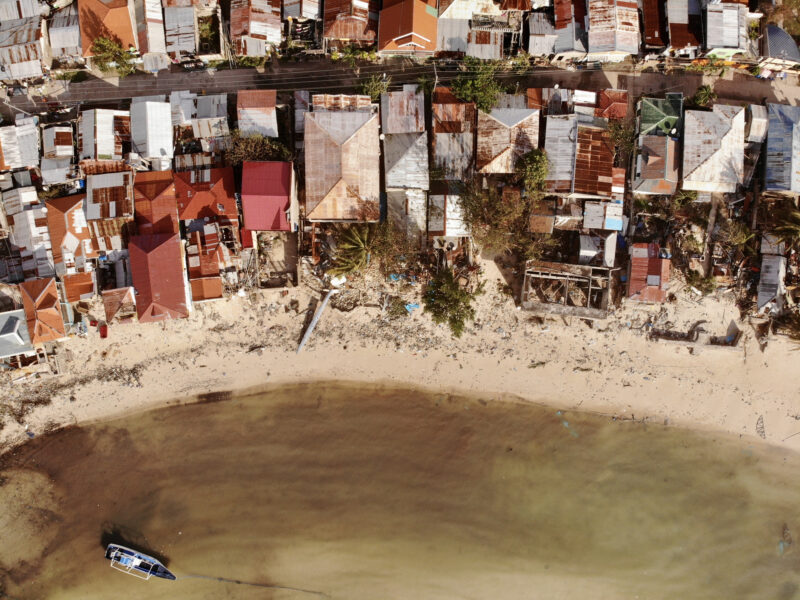Loss and damage: two options in play for fund’s makeup
There are currently two options on the table for the loss and damage fund’s structure – ‘programmatic’ and ‘responsive’. We reflect on the pros and cons of each.
Share

With less than four months to go, the transitional committee tasked with designing the new loss and damage fund by COP28 has moved on from discussing different stages of addressing loss and damage events (such as recovery and reconstruction) to a more programme-based approach. This leaves us with two options on the table for the fund’s structure – ‘programmatic’ and ‘responsive’. We reflect on the pros and cons of each.
A programmatic approach lets countries set their own agenda
Similar to the Global Environmental Fund, the Green Climate Fund describes a programmatic approach as “a set of interlinked individual ‘subprojects’ unified by an overarching vision, common objectives and a contribution to strategic goals.”
By extension, a programmatic approach for the new fund would support broad national loss and damage policies developed by vulnerable developing countries. The basic idea is that programmes developed by vulnerable developing countries would be the mechanism that triggers eligibility.
Some developing countries have already developed national loss and damage policies that could provide the basis for broader programmes. For example, Fiji and Bangladesh have set up national trust funds for relocation and emergencies respectively.
Given that countries are best placed to identify their own needs, a programmatic approach allows for country ownership and context-sensitive interventions. Ideally, flexibility to use the funds according to changing needs would allow countries to allocate resources in line with their evolving national priorities. Developing holistic national loss and damage response programmes could also lead to countries being better prepared across sectors.
As a potential downside, a programmatic approach could inadvertently create prohibitively high access hurdles if not designed with sufficient flexibility. Least developed countries in particular, but also many small island developing states, have had problems accessing the Green Climate Fund because funding applications often require data and vulnerability assessments that are not available. These same challenges could emerge under a programmatic approach for the loss and damage fund. In practice, developing ‘fundable’ loss and damage policies and plans could take years – time vulnerable developing countries don’t have to spare, as this summer’s devastating events highlight.
A responsive fund could be easier and quicker to access
A responsive approach links back to proposals for structuring the fund around ‘thematic windows’ – buckets of funding dispersed according to where you are in the cycle of a climate disaster. Here, the basic idea is that climate disasters trigger eligibility.
One example of the responsive approach in action is the European Union’s Solidarity Fund. This non-climate related fund allows EU member states to access support to deal with ‘major natural disasters’ that incur losses exceeding 0.6% of a country’s gross national income. Essentially, the relative damages themselves are the only criterion for access.
In the context of loss and damage, a responsive approach could lower the barriers to accessing finance and expedite the process. Specific thresholds in terms of losses and damages incurred could generate eligibility for access. These do not need to be limited to relative economic losses as in the EUSF; they could reflect non-economic dimensions like cultural heritage sites lost or ecosystems destroyed.
This means a responsive approach would require data, as the level of loss and damage would need to be assessed to determine whether a threshold had been reached. The standards developed for natural hazards known as ‘Post Disaster Needs Assessments’ could be used as initial guidelines.
The responsive approach is more applicable to climate-related extreme events than slow onset events like sea-level rise that don’t have a discrete and visible moment of occurrence. As a potential downside, the lack of predictability would make financial planning harder compared to a programmatic approach, and co-benefits like greater preparedness and awareness would be lost.
Both approaches are not mutually exclusive. In the end, a mix of the two could be ideal – ensuring national plans are eligible for funding alongside provisions to rapidly disperse funds immediately after a climate disaster strikes.
Discussions on how countries should access the loss and damage fund presuppose that there will be money at scale available in the fund to disburse – an essential ingredient regardless of the specific fund design. The question of who pays will therefore be keeping politicians busy as we build up to the climate talks in Dubai. Ideas for innovative taxation on polluting industries are abound. But so far, there’s no sign of the political will needed to take them forward.














